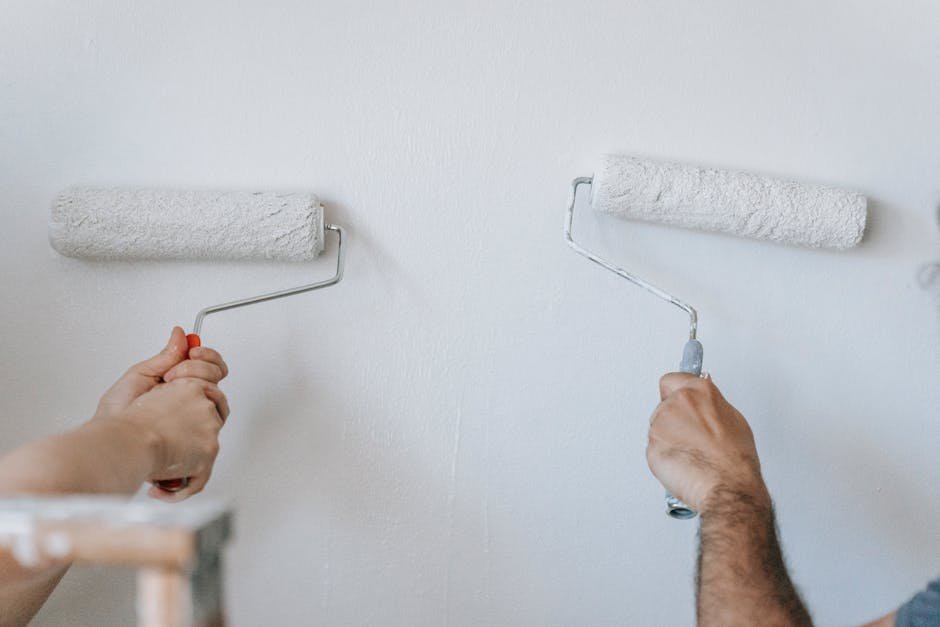How Often Should I Paint My House?
Factors Impacting Painting Frequency
Determining how often to paint your house depends on various factors. The first consideration is the quality of the previous paint job. High-quality paint may last longer and require less frequent repainting compared to lower-quality paint. Additionally, the climate and weather conditions in your area play a significant role. Extreme heat, cold, or humidity can impact the longevity of the paint on your house.
Another key factor is the material of the surface being painted. Different materials like wood, stucco, or brick may have varying maintenance requirements. For example, wood siding might need more frequent painting due to its tendency to warp or rot if not properly maintained. The amount of sunlight your house receives can also affect how often you'll need to repaint, as UV rays can cause paint to fade and deteriorate faster.
Moreover, the level of pollution in your area can influence the frequency of repainting. Pollutants like industrial emissions or car exhaust can settle on your house's exterior, causing the paint to degrade more quickly. Regular cleaning and maintenance can help prolong the life of the paint job, reducing the frequency of repainting needed.
In addition to external factors, the interior of your house can impact painting frequency. High-humidity areas such as bathrooms or kitchens may experience peeling or discoloration sooner than drier areas. Rooms with heavy traffic or children and pets might require more frequent touch-ups or repainting to keep the walls looking fresh and clean.
Exterior vs. Interior Considerations
When it comes to deciding how often to paint your house, distinguishing between exterior and interior surfaces is crucial. The exterior of your house is exposed to harsh environmental elements like sunlight, rain, and snow, making it more vulnerable to wear and tear. As a result, exterior painting usually requires more frequent maintenance compared to interior painting.
On the other hand, interior painting tends to last longer since indoor spaces are shielded from external conditions. However, factors like indoor air quality, usage patterns, and home renovations can impact the condition of interior paint. Regular cleaning and minor touch-ups can help prolong the lifespan of interior paint, delaying the need for a full repaint.
Understanding the difference in wear between exterior and interior surfaces can help you prioritize your painting projects. Investing in high-quality paints and proper surface preparation can further extend the longevity of both exterior and interior paint, reducing the frequency of repainting and saving you time and money in the long run.
In essence, while exterior painting may need more frequent attention due to exposure to the elements, interior painting offers more durability. By monitoring the condition of both exterior and interior surfaces and addressing any signs of wear or damage promptly, you can maintain the aesthetic appeal and protective function of your house paint.
Quality of Paint and Preparation
The quality of paint and the thoroughness of preparation play a significant role in determining how often you should paint your house. Investing in premium quality paint products can result in a more durable and long-lasting finish that requires less frequent repainting. High-quality paints are formulated to withstand fading, cracking, and peeling, providing better protection for your home.
Equally important is the preparation of the surfaces before painting. Proper surface cleaning, priming, and repair of any damage or imperfections ensure that the paint adheres well and lasts longer. Skipping or rushing through the preparation process can lead to premature paint failure, necessitating more frequent repainting to maintain the appearance of your house.
In addition to using quality paint and preparing the surfaces adequately, following the manufacturer's guidelines for application and maintenance can help maximize the lifespan of your paint job. Regular inspections of your house's exterior and interior paint can help identify early signs of wear or damage, allowing you to address them promptly and prevent more extensive repainting in the future.
By choosing high-quality paints, ensuring thorough preparation, and practicing good maintenance habits, you can extend the time between painting projects and enjoy a beautiful and well-protected home for years to come.
Signs It's Time to Repaint
Knowing when it's time to repaint your house is essential to maintaining its appearance and structural integrity. One clear sign that it's time for a fresh coat of paint is visible peeling, cracking, or chipping on the exterior or interior surfaces. These issues not only detract from your home's curb appeal but also leave it vulnerable to water damage and decay.
Fading or discoloration of the paint, especially in areas exposed to sunlight, indicates that the protective properties of the paint have diminished. If you notice significant fading or color changes, it's a good idea to consider repainting to restore the vibrancy and protection of your house. Stains, mold, or mildew growth on the walls are also red flags that it's time for a fresh coat of paint.
In addition to visual cues, changes in the texture or feel of the painted surfaces can signal the need for repainting. Rough or uneven areas, bubbling, or wrinkling of the paint suggest underlying issues that require attention. Regular inspections and maintenance can help you catch these signs early and address them before they escalate into more extensive and costly repainting projects.
Ultimately, staying vigilant about the condition of your house's paint and addressing any signs of wear or damage promptly can prolong the lifespan of the paint job and protect your home from the elements. By recognizing the signals that it's time to repaint and taking proactive steps to refresh your house's appearance, you can ensure that it remains a welcoming and well-maintained abode for years to come.

